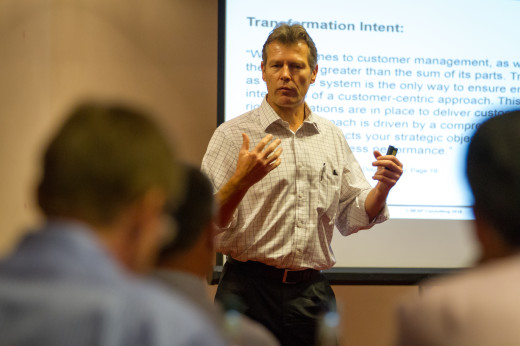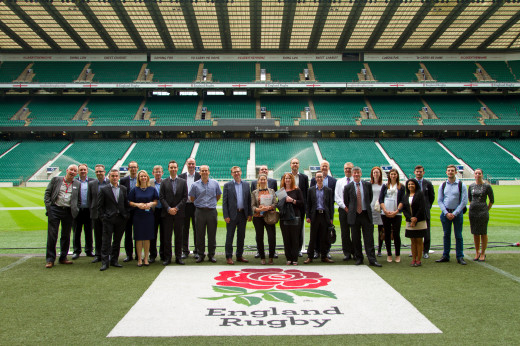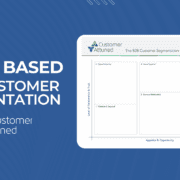The Great Debate (6) – Customer Centricity Masterclass
“Customer Centricity is the eco-system and operating model that enables an organisation to design and deliver a unique and distinctive customer experience”
Doug Leather
Over 60 people gathered at Twickenham Stadium on a warm June day for the sixth Great Debate, which focused this time on what “customer centricity” means in B2B, brilliantly delivered by Doug Leather.
The buzz in the room was tangible, and discussions animated as we moved through an intense programme that had delegates debating the challenges of their company strategies.
Doug Leather sets out the outcomes of the day:
- A deep understanding of what customer-centricity really is and why it is mission-critical for any organisation wanting to deliver sustainable and superior business performance in the 21st century
- A holistic view of the inherent complexity of customer-centricity and the business model that is required for an integrated, systems-thinking approach to overcome this complexity
- Insight into the opportunities and challenges in implementing customer-centricity within your own organisation and the capabilities that support and hinder the transformation required
The opening session considered the challenges of building and leading a 21st century organisation in a world that is undergoing rapid transformation in the economic, political, social and technological arenas. In this tide of change and upheaval, customers are stepping into their power and making ever-increasing demands of business. Doug asserted, “Building sustainable competitive advantage requires you to review your business models to ensure that the customer is central to its design”.
The teams discussed:
- How to learn and implement faster in the new environment? (c.f. Jack Welch)
- What ‘obsessing’ about the customer meant? (c.f. Jeff Bezos)
- If you “humanise” your company, what type of person would they be?
- Is the experience you offer authentic? (c.f. Joe Pine: true to yourself / be what you say you are)
- Are you crystal clear as to how your business creates, delivers and captures value?
- Do you understand how ‘to be’ a customer rather than to ‘have’ customers? Many conceded that in B2B we struggle to get beyond product centric thinking
The next session covered the vital importance of taking a systemic approach to customer management to ensure end-to-end integration. This requires good foundations and a comprehensive framework that practically connects your strategic objectives to the delivery of sustainable business performance.
Doug walked the participants through the Customer-Centric Organisational Blueprint (illustrated) and the teams discussed the “aha” points that struck them from the model:
- No part of a system is independent of the other parts, yet we operate independently
- “Better sameness” is not good enough – lots of energy & expense wasted on just being “more similar” to competitors (it was clear from the room that we ‘obsess’ about the competition rather than our customers)
- Do we “earn the right to be the customer’s first choice? (c.f. RBC)
- There needs to be evidence of authenticity – just keeping telling people doesn’t make it true!
- The biggest challenge in driving a customer centric model is having the belief, drive and leadership from the very top of the organisation
- Changing an organisation can be difficult if they operate in a world driven by quarterly reporting cycles and a need to continuously deliver financial results
In the next three modules of the Masterclass, Doug went through the twelve “golden threads” of critical B2B capability that sit beneath the CAA® model that is at the heart of the Blueprint (see Golden Threads Booklet).
For each of the 12 areas the teams referred to the detailed explanations of each thread in the accompanying booklet, and noted & discussed their top issues and actions.
Markets layer
- Constantly being told you’re “too expensive” – need to switch the conversation to value-based – from us saying “you need to” to the customer saying “I need”
- For those organisations transacting business via intermediaries, they need to decide on the consumers they want and then select partners who they can trust to access these end consumers. Too often, they continue to deal with the partners they have always dealt with and fail to get the end consumers they want to attract
- To support this, they need to work more closely with partners to ensure they are delivering the brand and proposition on your behalf
- Strategy can get defragmented when adhering to global stipulations and rolling out in multiple countries/jurisdictions.
Customer Layer
- Everyone says referrals are important but few properly manage them in the pipeline
- Reviews with key accounts aren’t very “formal”
- Sometimes we “force” key account status on clients who don’t want it!
- How “farming” needs to include “defending” accounts targeted by competitors
- Winback is a missed opportunity
- Aligning to the customer’s definition of success (rather than ours) was seen as challenging
- Group consensus was that there just aren’t that many good farmers in the market place.
- Skills required to be a good farmer and a good hunter are often very different but in many organisations, the same person is given the responsibility for both
- Barriers to entry and the unknown returns of recruiting and converting new business bears heavy costs
Organisation Layer
- Many hadn’t mapped the customer journey
- Old measures don’t drive new behaviours
- Leaders need to do everything to make Ease of Doing Business (EODB) both ways – easy to be an effective account manager as well as easy to be a customer
- Companies aren’t short of ideas – they struggle to operationalise them
- Many organisations are still organised around product and route to market, which can lead to customers experiencing very different journeys depending on the product or channel used
- Too few organisations have a genuine single view of customer
The remaining two sessions covered customer-centric strategy development and the transformational journey. The role of the Chief Customer Officer (CCO) was of particular interest, and the principles of ‘customer equity’ were explained, “traditional financial-based forms of evaluation do not adequately address sustainable business performance. Transform instead how you view customers as an asset requiring investment in their experience to deliver superior life time value”.
In the final group activity the teams were asked to prioritise the Golden Threads into their strategic priorities. They are of course ALL IMPORTANT, but each business needs to decide which of them will be defining characteristics of corporate DNA.
The workbook listed 12 “desired states” of B2B customer/broker/reseller management that could describe a B2B company in two or three years’ time. The teams prioritised them for their businesses, and an international research exercise has been instigated to compare priorities across sectors and regions.
Take the survey here!
To conclude the Masterclass, the whole assembly participated in a debate on what had been learned. Doug Leather was joined on the panel by Prof. Merlin Stone of Customer Attuned, Stephen Wilson from eBECS, Mark Francis of STAR, and John O’Connor from Deep-Insight. The debate discussed:
How to take back the message about the need to change to our respective businesses.
The need to identify and leverage ‘burning platforms’ was underlined; the requirement was reinforced for senior management to demonstrate leadership in the ‘doing’ rather than just paying lip service to customer centricity; centres of excellence in business units can be used to both inspire and coax other BUs into action; and the power of independent capability assessment was proffered as a way to identify and quantify gaps to best practice.
Is it possible to genetically re-engineer a company with customer-centric DNA? Who has achieved it?
The panel cited examples from the industrials, telco, food distribution and financial services sectors. This led to a discussion about a particular business bank with a very clear proposition and business model and the point was made that this bank’s prioritisation of the 12 Golden Threads would look very different to most in the room’s and that scalability of such a model will be challenging
Commoditisation in B2B.
In general it was agreed that B2B is less commoditised, but it remains a threat in many sectors. Those that can move to an ‘experience’ model will have first mover advantage
Tendering.
The ways in which the learning from the day can be applied to become more effective at tendering were discussed. The importance of being able to (ethically) influence the process and gain an early inside track was reinforced as well as the confidence to walk away / decline to pitch when the client refuses ‘real’ engagement
A difference of opinion surfaced over the validity of Lifetime Value (LTV).
Some thought it unachievable yet others cited cases of the principle being effectively applied. The point was made that LTV doesn’t need to be calculated to 2 decimal points! Businesses often only need to distinguish between high, medium & low LTV so calculate ‘just enough’ to attribute value at that level
Complex business models.
How can we even start with customer centricity when we don’t agree internally about who “the customer” is or have different cohorts to manage (e.g. broker vs. end-user)? The systemic approach presented during the day makes a start in helping companies clarify the B2B, B2C and B2B2C elements of their business models. Once identified, all functions (especially marketing & sales) must align to those models and agree on all the ‘rules of engagement’ – B2B being about trust, equitability and interdependence and B2C being about retention, efficiency, acquisition & penetration (REAP)
- Introducing the Levels of B2B Trust - September 30, 2024
- Customer Attuned Newsletter explores 3 Ways to Improve B2B Relationships - May 20, 2024
- Season’s Greetings from Customer Attuned - December 7, 2023






